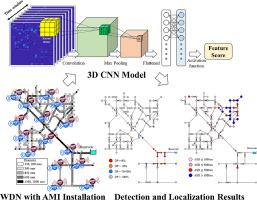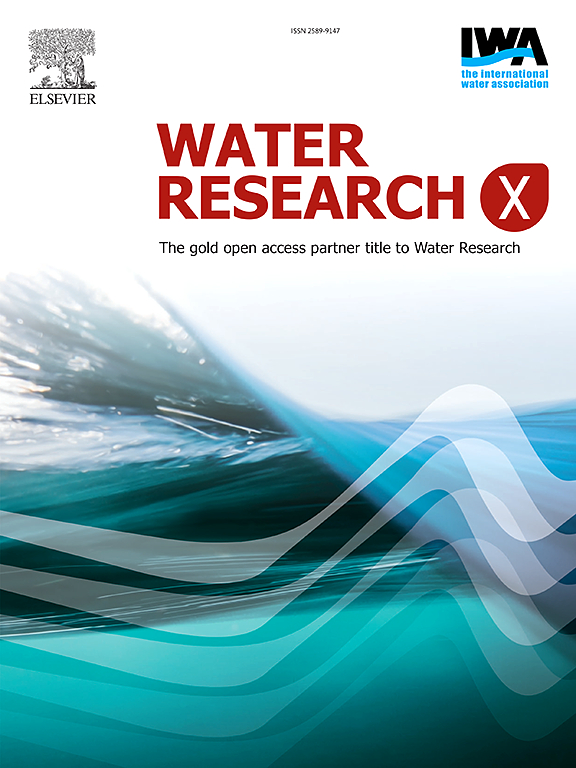Three-dimensional convolutional neural network for leak detection and localization in smart water distribution systems
IF 7.2
2区 环境科学与生态学
Q1 ENGINEERING, ENVIRONMENTAL
引用次数: 0
Abstract
Smart meters such as advanced metering infrastructure (AMI) can significantly improve identifying realistic sized leaks in water distribution networks (WDNs). However, to date, detection/localization methods for AMI systems are extremely limited. In this study, to examine the benefits of using AMIs for leak detection within distribution network, a three-dimensional (3D) convolutional neural network (CNN) deep learning (DL) model is proposed that can account for temporally and spatially distributed information of pressures. The 3D CNN is tested for a real WDN in Austin using the realistic sized leaks (e.g., 3 L/s for 150-mm pipes) that are generated from hydraulic simulations. The model's performance is evaluated using detection probability, false alarm rate, and localization pipe distance metrics. In addition, the strength of using DL for leak identification is examined by comparing the CNN results with those from an optimization-based model. The 3D CNN performed better than the optimization model indicating that DL has advantages over conventional tools such as optimization methods. However, its adaptability may limit its use in some cases. Since DL can be significantly impacted by hydraulic simulation model, a way to handle modelling error must be determined. In addition, as network changes occur, retraining is required that may be time consuming and have difficulty with the number of failure conditions.

用于智能配水系统泄漏检测和定位的三维卷积神经网络
先进计量基础设施(AMI)等智能仪表可以大大提高识别配水管网(WDN)中实际大小漏水点的能力。然而,迄今为止,AMI 系统的检测/定位方法极为有限。在本研究中,为了检验使用 AMI 对配水管网进行泄漏检测的益处,提出了一种三维(3D)卷积神经网络(CNN)深度学习(DL)模型,该模型可以考虑压力的时间和空间分布信息。该三维卷积神经网络在奥斯汀的一个真实 WDN 中进行了测试,使用的是水力模拟生成的真实泄漏量(例如,150 毫米管道的泄漏量为 3 升/秒)。使用检测概率、误报率和定位管道距离指标对模型的性能进行了评估。此外,通过比较 CNN 与基于优化的模型的结果,还考察了使用 DL 进行泄漏识别的优势。3D CNN 的表现优于优化模型,这表明 DL 比优化方法等传统工具更具优势。然而,其适应性可能会限制其在某些情况下的使用。由于 DL 可能会受到液压模拟模型的重大影响,因此必须确定处理建模误差的方法。此外,当网络发生变化时,需要进行重新训练,这可能会耗费大量时间,并且难以应对故障条件的数量。
本文章由计算机程序翻译,如有差异,请以英文原文为准。
求助全文
约1分钟内获得全文
求助全文
来源期刊

Water Research X
Environmental Science-Water Science and Technology
CiteScore
12.30
自引率
1.30%
发文量
19
期刊介绍:
Water Research X is a sister journal of Water Research, which follows a Gold Open Access model. It focuses on publishing concise, letter-style research papers, visionary perspectives and editorials, as well as mini-reviews on emerging topics. The Journal invites contributions from researchers worldwide on various aspects of the science and technology related to the human impact on the water cycle, water quality, and its global management.
 求助内容:
求助内容: 应助结果提醒方式:
应助结果提醒方式:


